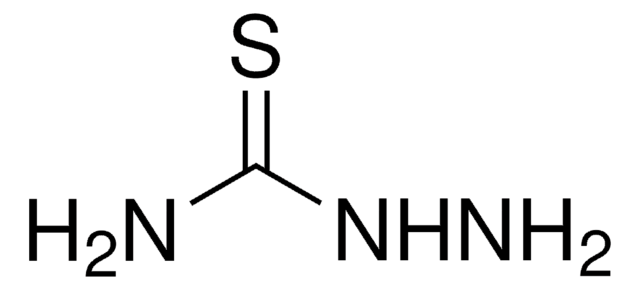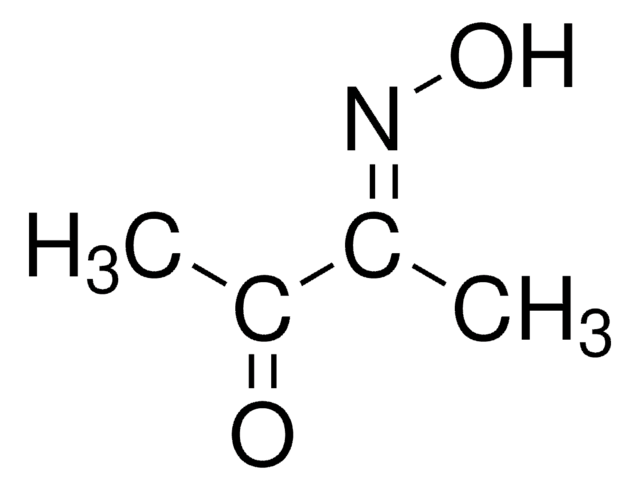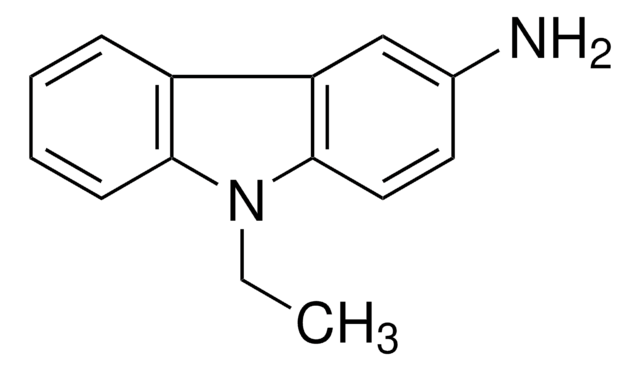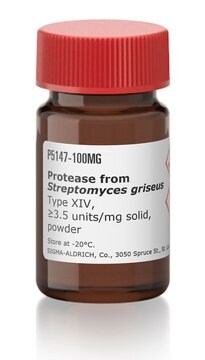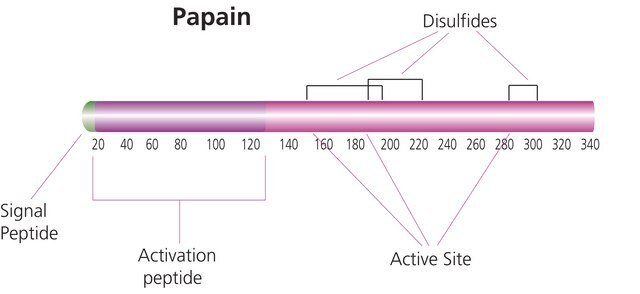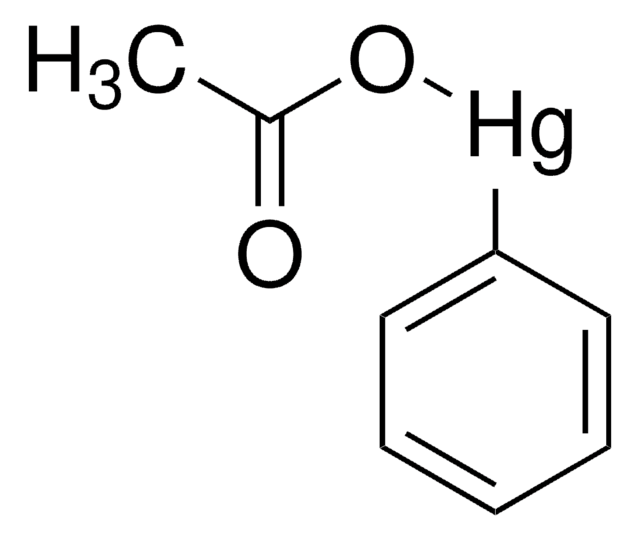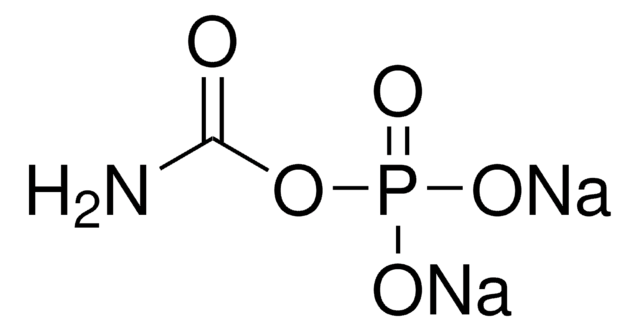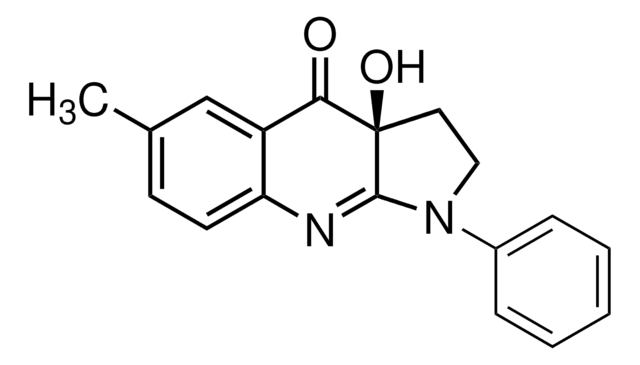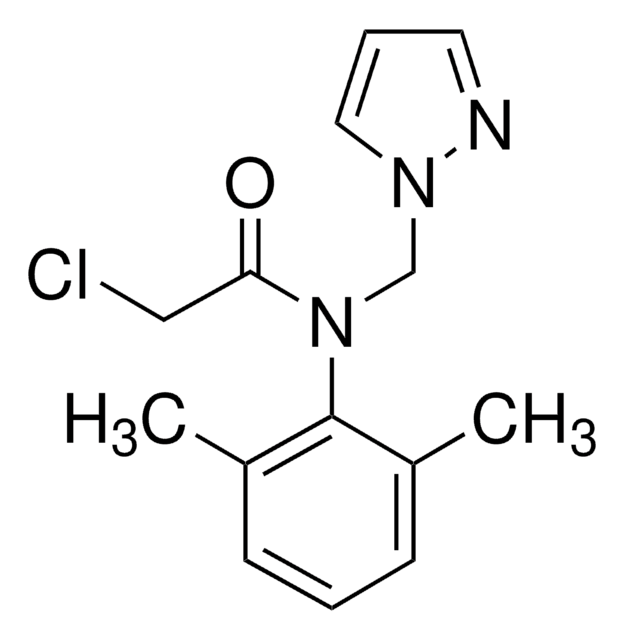Wszystkie zdjęcia(5)
Kluczowe dokumenty
B0753
2,3-Butanedione monoxime
≥98% (GC), powder, ATP-sensitive K⁺ and Ca²⁺ channel inhibitor
Synonim(y):
BDM, Biacetyl monoxime, Diacetyl monoxime
Zaloguj sięWyświetlanie cen organizacyjnych i kontraktowych
About This Item
Wzór liniowy:
CH3C(=NOH)COCH3
Numer CAS:
Masa cząsteczkowa:
101.10
Beilstein:
605582
Numer WE:
Numer MDL:
Kod UNSPSC:
12352200
Identyfikator substancji w PubChem:
NACRES:
NA.77
Polecane produkty
Nazwa produktu
2,3-Butanedione monoxime, ≥98%
Poziom jakości
Próba
≥98%
Formularz
powder
bp
185-186 °C (lit.)
mp
75-78 °C (lit.)
ciąg SMILES
CC(=O)\C(C)=N\O
InChI
1S/C4H7NO2/c1-3(5-7)4(2)6/h7H,1-2H3/b5-3+
Klucz InChI
FSEUPUDHEBLWJY-HWKANZROSA-N
informacje o genach
human ... KCNB1(3745)
Szukasz podobnych produktów? Odwiedź Przewodnik dotyczący porównywania produktów
Zastosowanie
2,3-Butanedione monoxime has been used:
- in single-molecule myosin V motility assays
- as an anesthetic in the approach of imaging transgenic animals
- to reduce rigor tension in muscle fibres
- as a media component for mice cardiomyocytes culture
Działania biochem./fizjol.
2,3-Butanedione monoxime is inhibitor of ATP-sensitive K+ and Ca2+ channels.
DRK1 is a delayed rectifier (Kv2.1) cloned K+ channel from rat brain with consensus sites for protein kinase-dependent phosphorylation that might be expected to be functionally regulated by phosphorylation. 2,3-Butanedione monoxime (BDM) chemically removes phosphate groups from many proteins, and its action on DRK1 channels was examined after expression of DRK1 cRNA in Xenopus oocytes. In two-microelectrode voltage-clamp experiments, the application of 2,3-Butanedione monoxime to the bath inhibited DRK1 current (ki = 16.6 mM, H = 0.96) rapidly and reversibly, with a time course similar to the time course of solution change within the bath. DRK1 current was inhibited at all potentials; the time course of current activation, deactivation and inactivation were unaffected by 2,3-Butanedione monoxime. In inside-out patch-clamp experiments, the application of 2,3-Butanedione monoxime to the cytoplasmic surface similarly inhibited channel activity rapidly and reversibly (ki = 10.7 mM, H = 1.01) in the absence of rephosphorylating substrates. These results are inconsistent with a phosphatase effect, because such an effect should be irreversible in cell-free, ATP-free patches. Instead, the results suggest that 2,3-Butanedione monoxime can inhibit DRK1 channels directly from inside or outside of the membrane.
Ta strona może zawierać tekst przetłumaczony maszynowo.
Kod klasy składowania
11 - Combustible Solids
Klasa zagrożenia wodnego (WGK)
WGK 3
Temperatura zapłonu (°F)
Not applicable
Temperatura zapłonu (°C)
Not applicable
Środki ochrony indywidualnej
Eyeshields, Gloves, type N95 (US)
Wybierz jedną z najnowszych wersji:
Masz już ten produkt?
Dokumenty związane z niedawno zakupionymi produktami zostały zamieszczone w Bibliotece dokumentów.
Klienci oglądali również te produkty
M L Riccio et al.
Circulation research, 84(8), 955-963 (1999-05-01)
Despite recent advances in our understanding of the mechanism for ventricular fibrillation (VF), important electrophysiological aspects of the development of VF still are poorly defined. It has been suggested that the onset of VF involves the disintegration of a single
A transgenic approach to live imaging of heparan sulfate modification patterns
Glycosaminoglycans, 253-268 (2015)
Deficiency of mouse mast cell protease 4 mitigates cardiac dysfunctions in mice after myocardium infarction
Wang Yunzhe, et al.
Biochimica et Biophysica Acta (BBA)-Molecular Basis of Disease (2019)
Venkatakaushik Voleti et al.
Nature methods, 16(10), 1054-1062 (2019-09-29)
The limited per-pixel bandwidth of most microscopy methods requires compromises between field of view, sampling density and imaging speed. This limitation constrains studies involving complex motion or fast cellular signaling, and presents a major bottleneck for high-throughput structural imaging. Here
Tilting and wobble of myosin V by high-speed single-molecule polarized fluorescence microscopy.
Beausang JF et al
Biophysical Journal, 104(6), 1263-1273 (2013)
Nasz zespół naukowców ma doświadczenie we wszystkich obszarach badań, w tym w naukach przyrodniczych, materiałoznawstwie, syntezie chemicznej, chromatografii, analityce i wielu innych dziedzinach.
Skontaktuj się z zespołem ds. pomocy technicznej